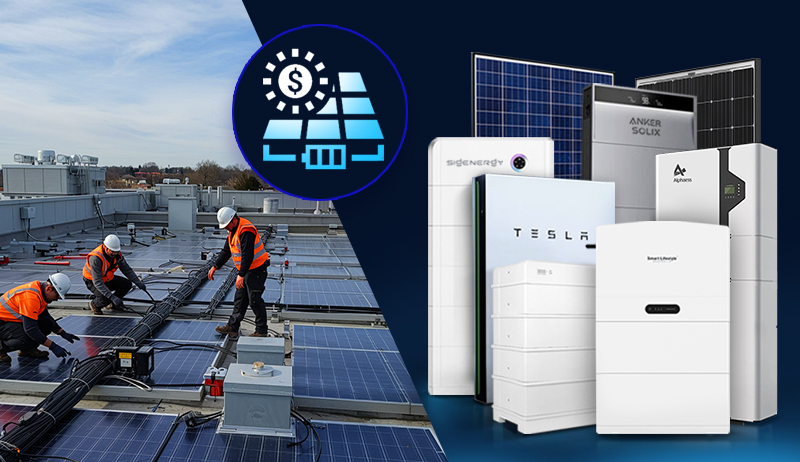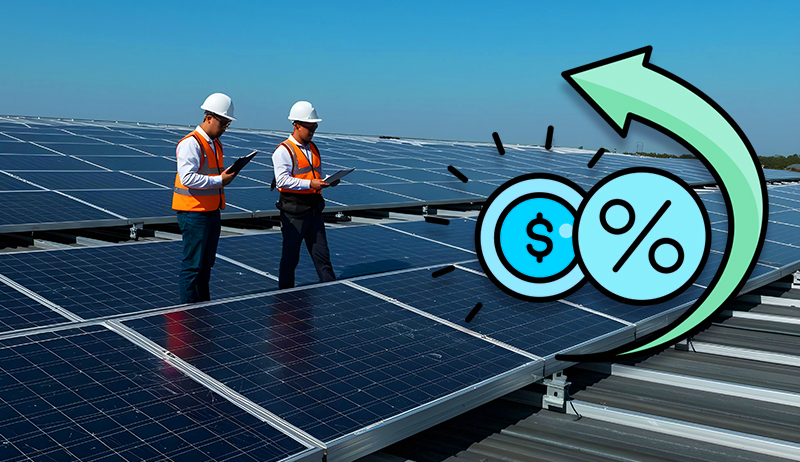Geothermal
Bouillante Geothermal power plant- Guadeloupe
The Bouillante Geothermal Power Plant is located in the town of Bouillante on the island of Basse-Terre in Guadeloupe, which is an overseas department of France in the Caribbean.
The power plant is situated in an area of high geothermal activity, which is caused by the region’s proximity to the Soufriere volcano.
The Bouillante Geothermal Power Plant was first constructed in the 1970s and was the first geothermal power plant to be built in France. The plant was initially designed to produce electricity for the local area, but it was later expanded to supply power to the entire island of Basse-Terre. The power plant has a capacity of around 15 megawatts and produces approximately 100 gigawatt-hours of electricity per year.
The geothermal energy is extracted through deep wells that tap into the volcanic reservoirs beneath the earth’s surface. The hot water and steam are then used to drive turbines that generate electricity. The plant also uses a binary cycle process, which is a more efficient way of generating electricity from geothermal energy than traditional steam turbines.
The Bouillante Geothermal Power Plant has played an important role in reducing Guadeloupe’s dependence on imported fossil fuels for electricity generation. It has also helped to reduce the region’s greenhouse gas emissions by providing a source of renewable energy.
The Bouillante Geothermal Power Plant is a testament to the potential of geothermal energy as a clean and sustainable source of power.
History of Bouillante Geothermal power plant- Guadeloupe
The Bouillante Geothermal Power Plant has a rich history that dates back to the 1960s when the French government first became interested in exploring the region’s geothermal potential. At the time, Guadeloupe was heavily dependent on imported fossil fuels for electricity generation, and the government was keen to find a more sustainable solution.
In 1969, a team of French scientists conducted a survey of the Bouillante region and discovered that it was a prime location for geothermal energy production. The scientists identified several hot springs and fumaroles (openings in the earth’s crust that emit steam and gas) in the area, indicating that there was a significant amount of geothermal activity beneath the surface.
Construction on the Bouillante Geothermal Power Plant began in the early 1970s, and the first phase of the project was completed in 1976. The plant was designed to produce electricity for the local area, but it was later expanded to supply power to the entire island of Basse-Terre. In 1986, a second power plant was built in Bouillante, which increased the region’s geothermal electricity generation capacity to around 15 megawatts.
Over the years, the Bouillante Geothermal Power Plant has undergone several upgrades and modernizations to improve its efficiency and reliability. In 2001, the plant was retrofitted with a binary cycle process, which is a more efficient way of generating electricity from geothermal energy than traditional steam turbines. The binary cycle process involves passing the geothermal fluid through a heat exchanger to transfer its heat to a secondary fluid, which then drives a turbine to generate electricity.
Today, the Bouillante Geothermal Power Plant continues to play an important role in Guadeloupe’s energy mix, providing a reliable and sustainable source of electricity for the region.
Bouillante Geothermal power plant- Guadeloupe, operated by
The Bouillante Geothermal Power Plant in Guadeloupe is owned and operated by the French energy company, Electricité de France (EDF). EDF is a leading electricity producer in Europe and operates a wide range of energy generation facilities, including nuclear, hydro, wind, and geothermal power plants.
EDF has been operating the Bouillante Geothermal Power Plant since its construction in the 1970s and has invested in numerous upgrades and modernizations over the years to improve the plant’s efficiency and reliability. The company also operates other geothermal power plants around the world, including in Italy, Turkey, and Indonesia.
In addition to operating the Bouillante Geothermal Power Plant, EDF is actively involved in the development of new geothermal projects in France and around the world. The company is committed to promoting the growth of renewable energy sources, including geothermal energy, as part of its efforts to reduce greenhouse gas emissions and combat climate change.
Bouillante Geothermal power plant- Guadeloupe, financial and international investment
The Bouillante Geothermal Power Plant in Guadeloupe has received financial and international investment from several organizations over the years.
Here are some examples:
European Investment Bank (EIB): In 2005, the EIB provided a loan of €57 million to EDF to support the development of the Bouillante Geothermal Power Plant and other renewable energy projects in Guadeloupe. The loan was part of the EIB’s efforts to promote sustainable energy generation in Europe and around the world.
Agence Française de Développement (AFD): The AFD has also provided funding to support the development of renewable energy projects in Guadeloupe, including the Bouillante Geothermal Power Plant. In 2019, the AFD approved a €24 million loan to support the expansion of the geothermal plant and the installation of additional renewable energy sources on the island.
International Finance Corporation (IFC): The IFC, a member of the World Bank Group, has provided technical assistance to EDF to help improve the performance of the Bouillante Geothermal Power Plant. The IFC has also provided funding and technical support for the development of other geothermal projects around the world.
Global Environment Facility (GEF): The GEF, an international organization that provides funding for environmental projects, has supported the development of geothermal energy in the Caribbean region, including the Bouillante Geothermal Power Plant. The GEF has provided funding for geothermal exploration and development activities in Guadeloupe and other countries in the region.
The Bouillante Geothermal Power Plant has benefited from significant financial and international investment, which has helped to support its development and expansion over the years.
Bouillante Geothermal power plant- Guadeloupe, energy contribution
The Bouillante Geothermal Power Plant in Guadeloupe is a significant contributor to the region’s energy supply.
Here are some key facts about the plant’s energy contribution:
Capacity: The Bouillante Geothermal Power Plant has a total installed capacity of around 15 megawatts (MW), which is enough to power around 10,000 homes.
Electricity production: The plant produces electricity by harnessing the heat energy from the geothermal fluid extracted from underground reservoirs. The electricity is fed into the local grid and distributed to consumers throughout the island of Basse-Terre.
Energy mix: The Bouillante Geothermal Power Plant is one of several sources of electricity in Guadeloupe’s energy mix, which also includes fossil fuels (primarily oil) and renewable energy sources such as solar and wind power.
Renewable energy: Geothermal energy is a renewable energy source, which means that it is sustainable and can be used to generate electricity without depleting natural resources. The Bouillante Geothermal Power Plant is therefore an important part of Guadeloupe’s efforts to transition to a more sustainable and low-carbon energy system.
Reduction in greenhouse gas emissions: By displacing the use of fossil fuels in electricity generation, the Bouillante Geothermal Power Plant helps to reduce greenhouse gas emissions and mitigate the impacts of climate change. It is estimated that the plant’s operation saves around 23,000 tonnes of carbon dioxide emissions per year.
Overall, the Bouillante Geothermal Power Plant plays a significant role in Guadeloupe’s energy supply, providing a reliable and sustainable source of electricity that helps to reduce greenhouse gas emissions and support the transition to a more sustainable energy system.
https://www.exaputra.com/2023/04/bouillante-geothermal-power-plant.html
Renewable Energy
Meat–It’s What’s for Dinner, if You Don’t Care about the Animals or the Planet
 We often hear meat-eaters say things like, “If beef isn’t good, why do the manufacturers of plant-based burgers try so hard to make their burgers taste like real meat?”
We often hear meat-eaters say things like, “If beef isn’t good, why do the manufacturers of plant-based burgers try so hard to make their burgers taste like real meat?”
There is no doubt that cow and pig meat tastes and smells great; every vegan on Earth will tell you that.
The problem lies elsewhere, in a) the environmental impact of clearing the rainforests to make room for more cows, and b) the cruelty inherent in factory farming and the slaughtering of the animals.
Meat–It’s What’s for Dinner, if You Don’t Care about the Animals or the Planet
Renewable Energy
FAQs: Your Most Common Commercial Solar Questions Answered
The post FAQs: Your Most Common Commercial Solar Questions Answered appeared first on Cyanergy.
https://cyanergy.com.au/blog/faqs-your-most-common-commercial-solar-questions-answered/
Renewable Energy
Socialism and Autocracy
 20th Century Austrian-American economist and devout anti-communist Ludwig von Mises clearly believed what he said at left, and there were plenty of examples in the 1900s to support his concept.
20th Century Austrian-American economist and devout anti-communist Ludwig von Mises clearly believed what he said at left, and there were plenty of examples in the 1900s to support his concept.
Now, 50 years after his death, we wonder what he would think about today’s United States.
The U.S. has an economy that’s as close to unadulterated capitalism as anyone could imagine, but we have a president who is most definitely an authoritarian, a would-be dictator.
-
Climate Change4 months ago
Guest post: Why China is still building new coal – and when it might stop
-
Greenhouse Gases4 months ago
Guest post: Why China is still building new coal – and when it might stop
-
Climate Change2 years ago
Spanish-language misinformation on renewable energy spreads online, report shows
-

 Greenhouse Gases2 years ago
Greenhouse Gases2 years ago嘉宾来稿:满足中国增长的用电需求 光伏加储能“比新建煤电更实惠”
-
Climate Change Videos2 years ago
The toxic gas flares fuelling Nigeria’s climate change – BBC News
-

 Climate Change2 years ago
Climate Change2 years ago嘉宾来稿:满足中国增长的用电需求 光伏加储能“比新建煤电更实惠”
-

 Carbon Footprint2 years ago
Carbon Footprint2 years agoUS SEC’s Climate Disclosure Rules Spur Renewed Interest in Carbon Credits
-
Climate Change2 years ago
Why airlines are perfect targets for anti-greenwashing legal action











 Full energy assessment
Full energy assessment




